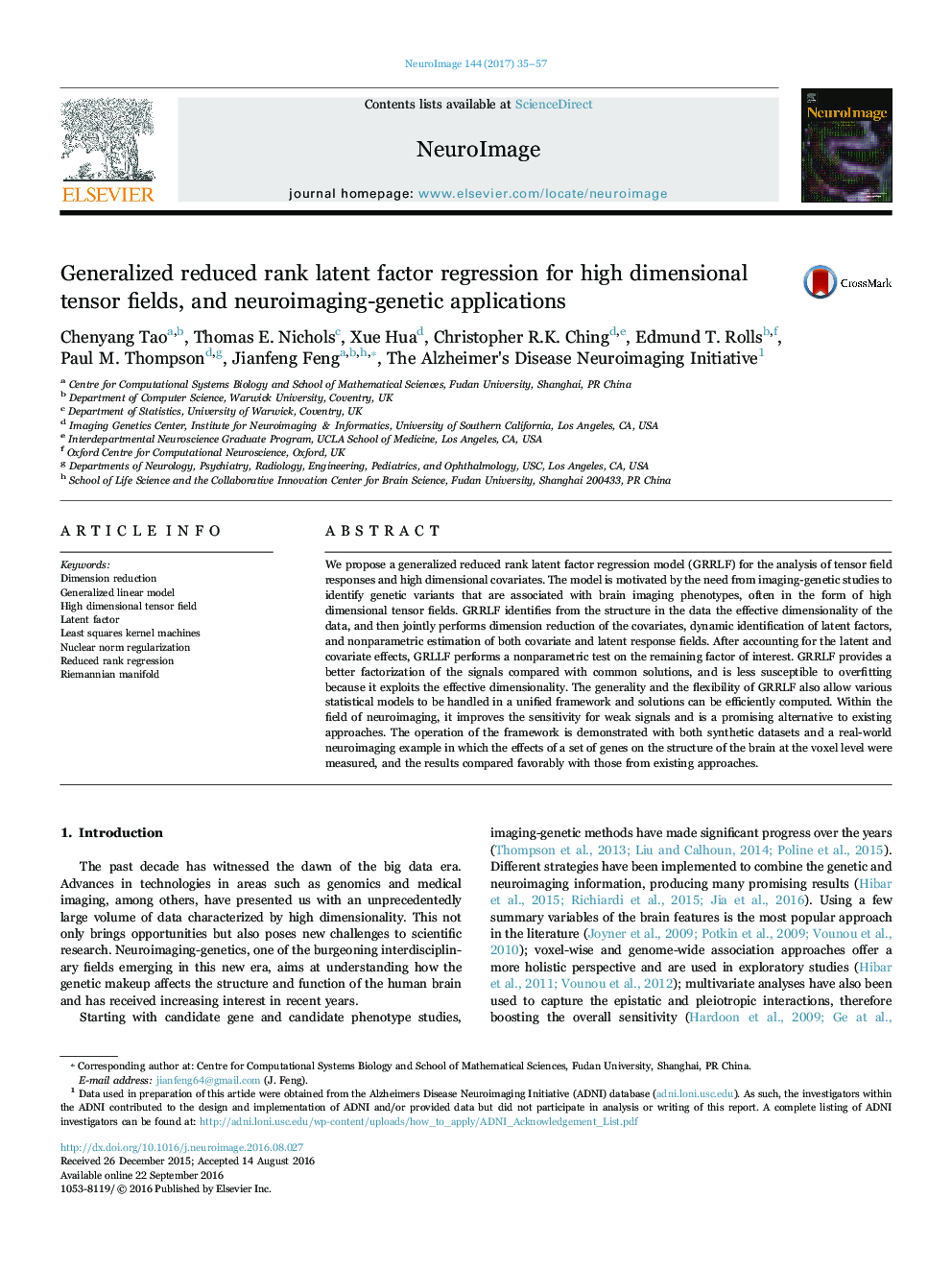| کد مقاله | کد نشریه | سال انتشار | مقاله انگلیسی | نسخه تمام متن |
|---|---|---|---|---|
| 5631660 | 1406503 | 2017 | 23 صفحه PDF | دانلود رایگان |
- A new regression model controlling for effective dimensions and latent factors.
- We show how latent factors jeopardize traditional methods but not this new model.
- A kernel-based procedure is also proposed for efficient imaging genetic studies.
- We apply our method to ADNI dataset and CACNA1C to be the most significant gene.
- Our results show more significance and biological relevance than previous studies.
We propose a generalized reduced rank latent factor regression model (GRRLF) for the analysis of tensor field responses and high dimensional covariates. The model is motivated by the need from imaging-genetic studies to identify genetic variants that are associated with brain imaging phenotypes, often in the form of high dimensional tensor fields. GRRLF identifies from the structure in the data the effective dimensionality of the data, and then jointly performs dimension reduction of the covariates, dynamic identification of latent factors, and nonparametric estimation of both covariate and latent response fields. After accounting for the latent and covariate effects, GRLLF performs a nonparametric test on the remaining factor of interest. GRRLF provides a better factorization of the signals compared with common solutions, and is less susceptible to overfitting because it exploits the effective dimensionality. The generality and the flexibility of GRRLF also allow various statistical models to be handled in a unified framework and solutions can be efficiently computed. Within the field of neuroimaging, it improves the sensitivity for weak signals and is a promising alternative to existing approaches. The operation of the framework is demonstrated with both synthetic datasets and a real-world neuroimaging example in which the effects of a set of genes on the structure of the brain at the voxel level were measured, and the results compared favorably with those from existing approaches.
Journal: NeuroImage - Volume 144, Part A, 1 January 2017, Pages 35-57
